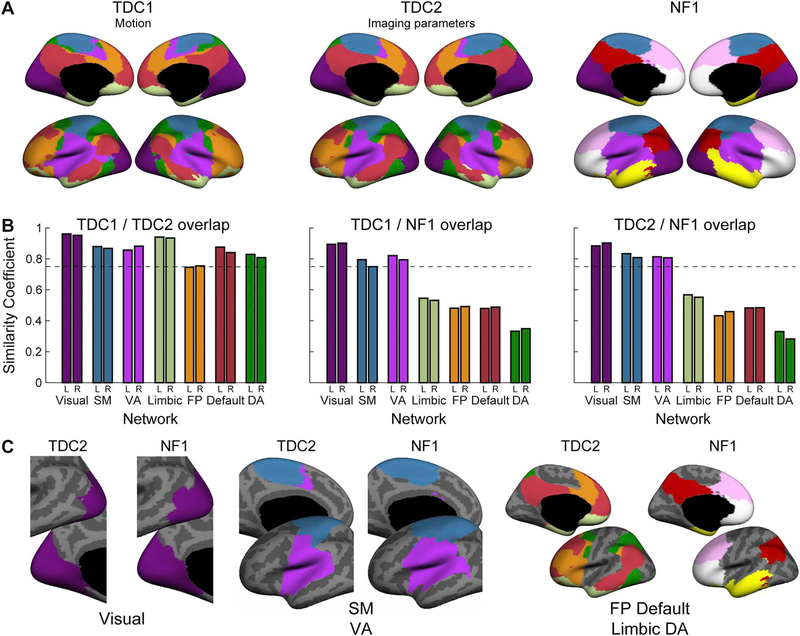Fig. 1.
Pediatric NF1 participants demonstrate disrupted association network organization. (A) A global similarity-based clustering parcellation to seven networks of two age- and gender-matched typically developing children (TDC) comparison groups, TDC1 group (left) matched for participant motion and TDC2 group (middle) matched for MRI repetition time. Network parcellation of the NF1 group (right) demonstrates a notable lack of long-distance connectivity. (B) Network overlap estimated with Sørensen–Dice index (similarity coefficient) between the two control groups (all > 0.75; left) reveals close agreement between left and right hemispheres. The similarity coefficient between TDC1 and NF1 groups (middle) and TDC2 and NF1 groups (right) is virtually equivalent for the Visual, Ventral Attention (VA) and Somatomotor (SM), but low for Limbic, Dorsal Attention (DA), Frontoparietal (FP) and Default networks. (C) Consistent with the similarity coefficient, spatial extent is conserved for the Visual network and is similar to the adult form (not shown; cf. Yeo et al., 2011). Putative SM and VA networks are similar across TDC2 and NF1 but differ relative to adults. The DA, FP, Default and Limbic networks differ between TDC2 and NF1 although the spatial extent of the two networks is similar when considered together.

